How rocks are formed
KS2 geography
How do rocks form? How many types of rock do you know? Join Rowan the Reindeer and Cavewoman for a fun bitesize guide – and get ready to rock!
How rocks are formed
KS2 geography
How do rocks form? How many types of rock do you know? Join Rowan the Reindeer and Cavewoman for a fun bitesize guide – and get ready to rock!
How rocks are formed
KS2 geography
How do rocks form? How many types of rock do you know? Join Rowan the Reindeer and Cavewoman for a fun bitesize guide – and get ready to rock!
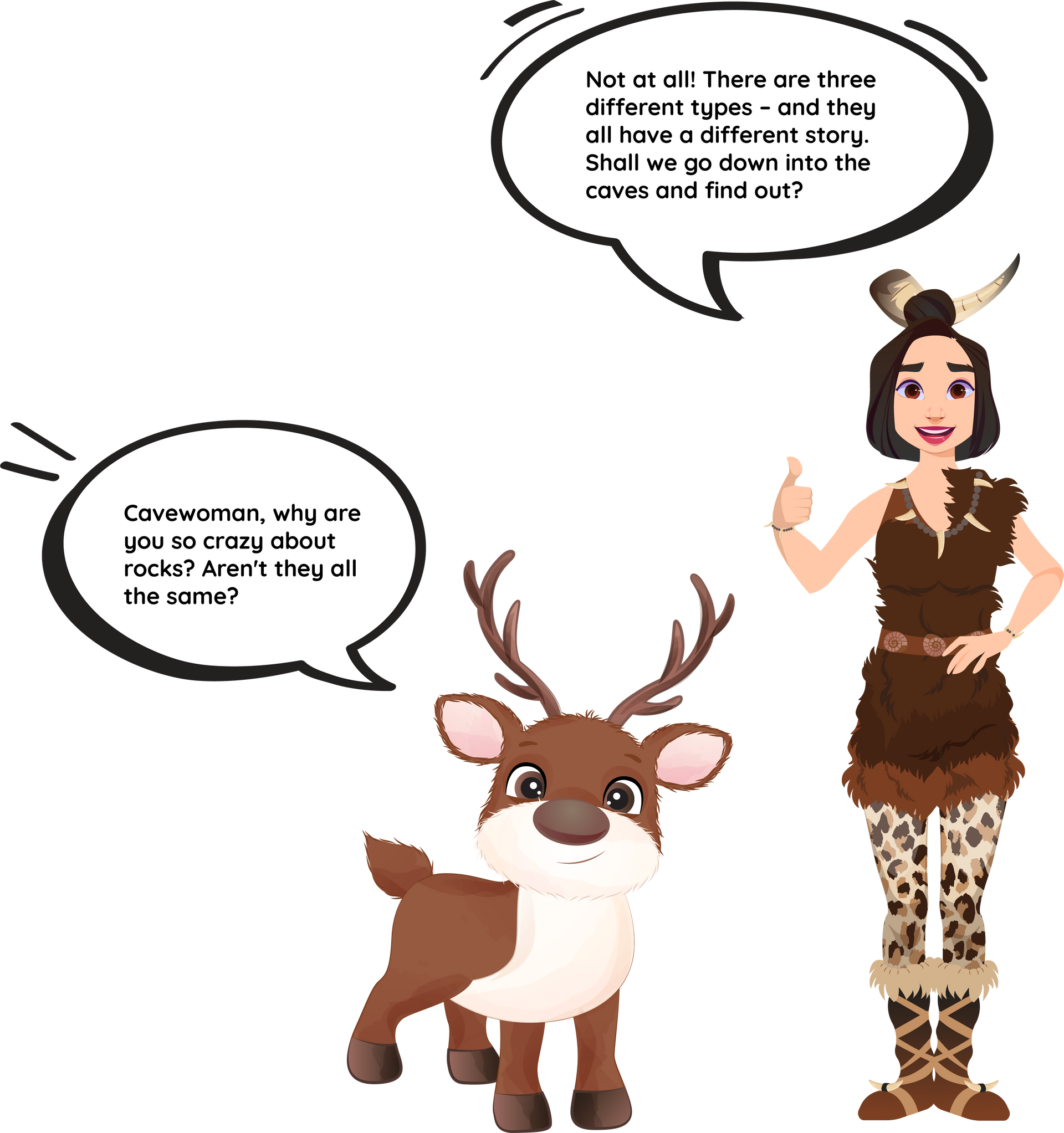

What are the different types of rock?
A rock is just a rock, right?
Wrong! As Cavewoman says, there are
three
main
types
of
rock. And she should know – she's been living in these caves for a long, long time…
They all have long names:
sedimentary,
igneous and
metamorphic. One way to remember them is by taking the first letter of each to make the word
SIM.
Each one is formed in a different way and has a different story to tell. Let's start with our layered friend, sedimentary rock…
S
Sedimentary
I
Igneous
M
Metamorphic
What are the different types of rock?
A rock is just a rock, right? Wrong! As Cavewoman says, there are three main types of rock. And she should know – she's been living in these caves for a long, long time…
They all have long names: sedimentary, igneous and metamorphic. One way to remember them is by taking the first letter of each to make the word SIM.
Each one is formed in a different way and has a different story to tell. Let's start with our layered friend, sedimentary rock…
S
I
M
What are the different types of rock?
A rock is just a rock, right? Wrong! As Cavewoman says, there are three main types of rock. And she should know – she's been living in these caves for a long, long time…
They all have long names: sedimentary, igneous and metamorphic. One way to remember them is by taking the first letter of each to make the word SIM.
Each one is formed in a different way and has a different story to tell. Let's start with our layered friend, sedimentary rock…
S
Sedimentary
I
Igneous
M
Metamorphic
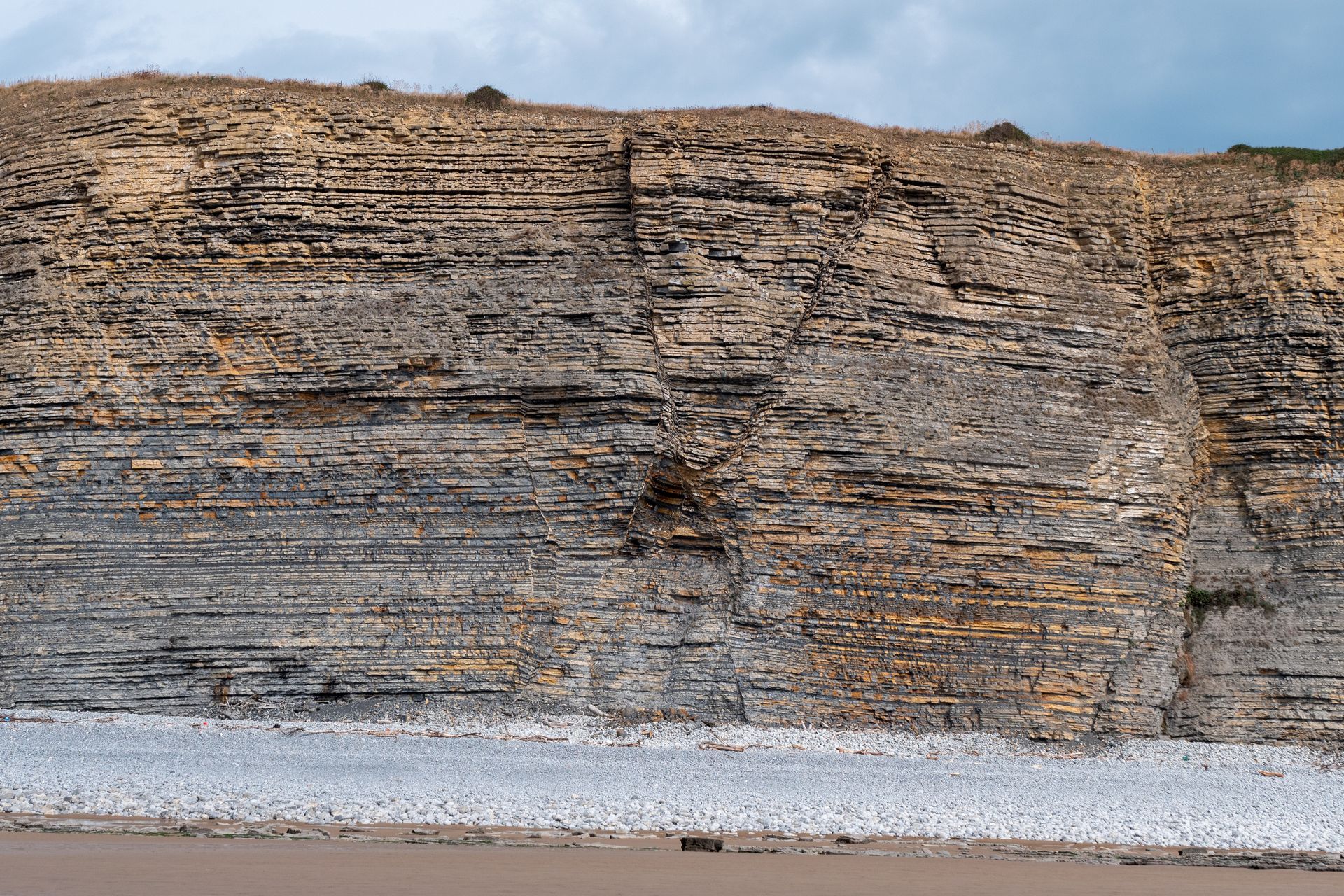
Slide title
Write your caption hereButton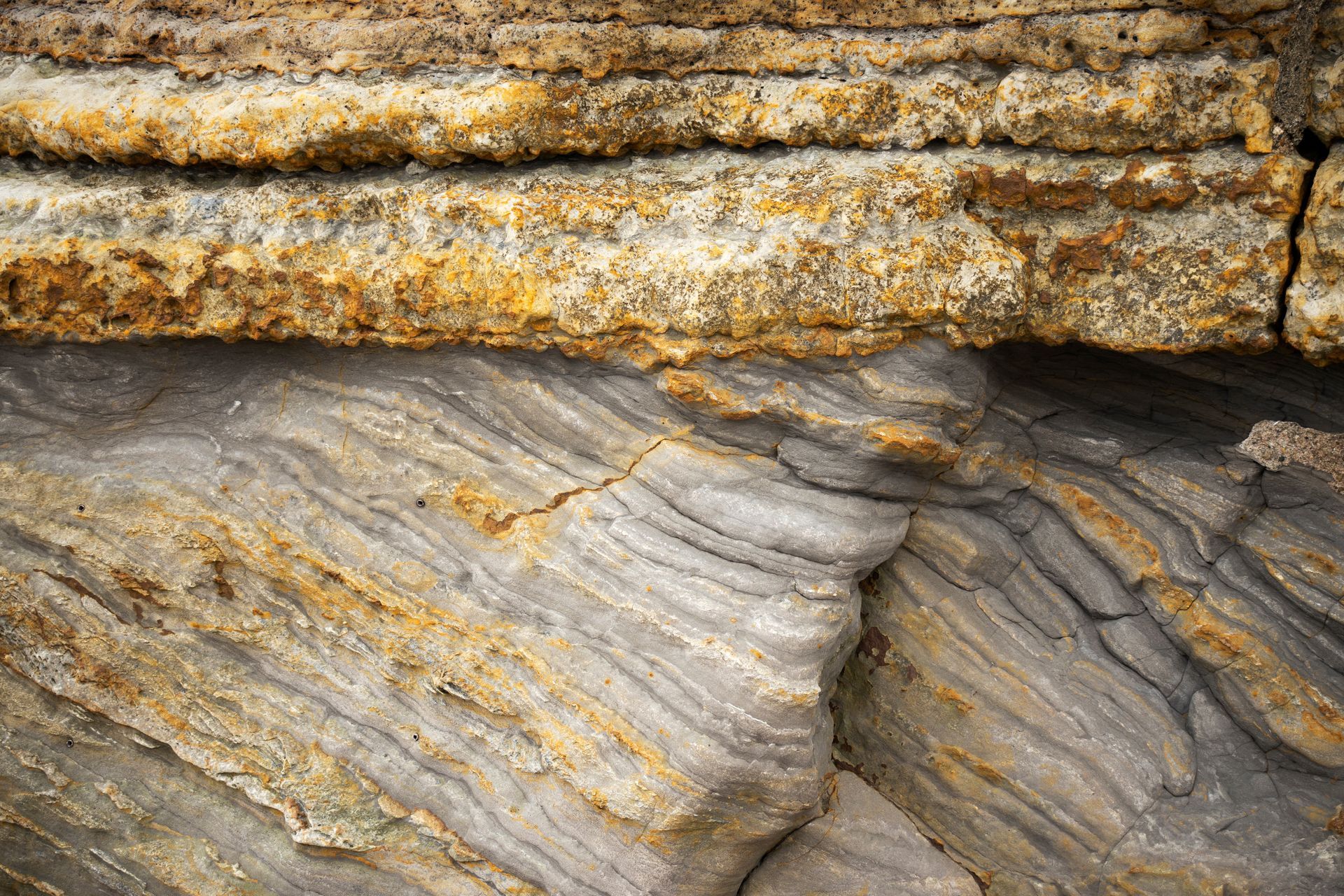
Slide title
Write your caption hereButton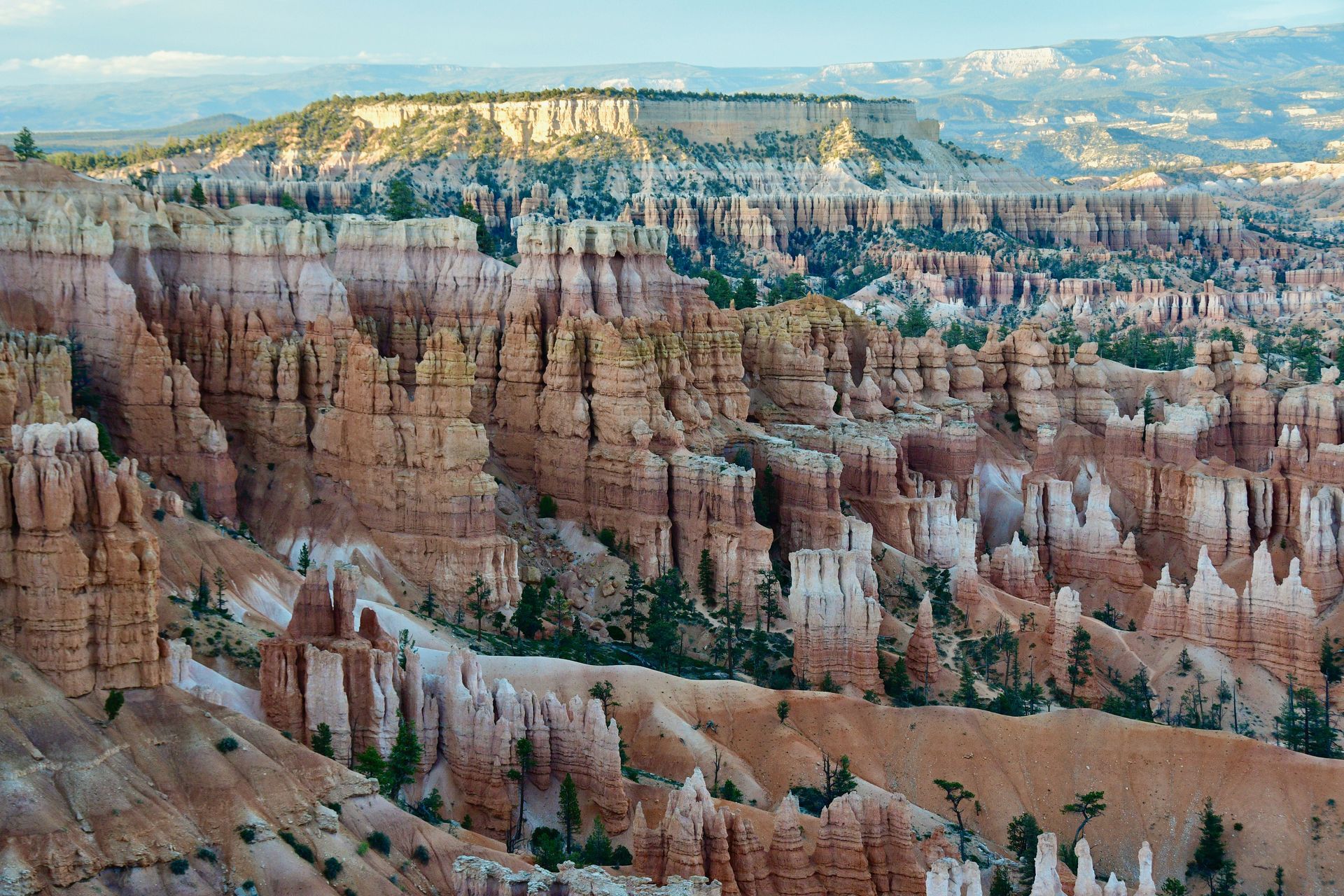
Slide title
Write your caption hereButton
What is sedimentary rock?
Imagine a rock crumbling. The little broken bits get blown about and settle on the ground. Over time, the bones of animals and dead leaves get mixed in. The layers build up – soon it's a stack of bits and bobs.
The layers get rained on, snowed on, walked on by other animals. They get squashed together. Eventually, these layers turn into rock.
Most fossils come from sedimentary rocks. We've got plenty to look at in our gift shop!
What is sedimentary rock?
Imagine a rock crumbling. The little broken bits get blown about and settle on the ground. Over time, the bones of animals and dead leaves get mixed in. The layers build up – soon it's a stack of bits and bobs.
The layers get rained on, snowed on, walked on by other animals. They get squashed together. Eventually, these layers turn into rock.
Most fossils come from sedimentary rocks. We've got plenty to look at in our gift shop!

Slide title
Write your caption hereButton
Slide title
Write your caption hereButton
Slide title
Write your caption hereButton
Hover over a picture to see what the sedimentary rock is used for

Slide title
Write your caption hereButton
Slide title
Write your caption hereButton
Slide title
Write your caption hereButton
What is sedimentary rock?
Imagine a rock crumbling. The little broken bits get blown about and settle on the ground. Over time, the bones of animals and dead leaves get mixed in. The layers build up – soon it's a stack of bits and bobs.
The layers get rained on, snowed on, walked on by other animals. They get squashed together. Eventually, these layers turn into rock.
Most fossils come from sedimentary rocks. We've got plenty to look at in our gift shop!
What is igneous rock?
Igneous rocks are formed from molten rock or magma. This bursts from volcanoes at incredible temperatures – or it oozes underground.
When the magma cools down, it dries. A bit like glue, it's sticky at first, then goes hard. The hard magma is called igneous rock.
Volcanoes can be scary – but without them, we wouldn't have rocks like granite and basalt.
What is metamorphic rock?
Sedimentary rocks are made on the surface of the earth. But over time they get pushed down, down into the earth's crust.
Add a lot of heat and a lot of pressure, and these sedimentary rocks turn into metamorphic rocks. And we mean a lot of heat – at least as hot as an oven!
Some metamorphic rocks sparkle with crystals. Can you find any in the gift shop?
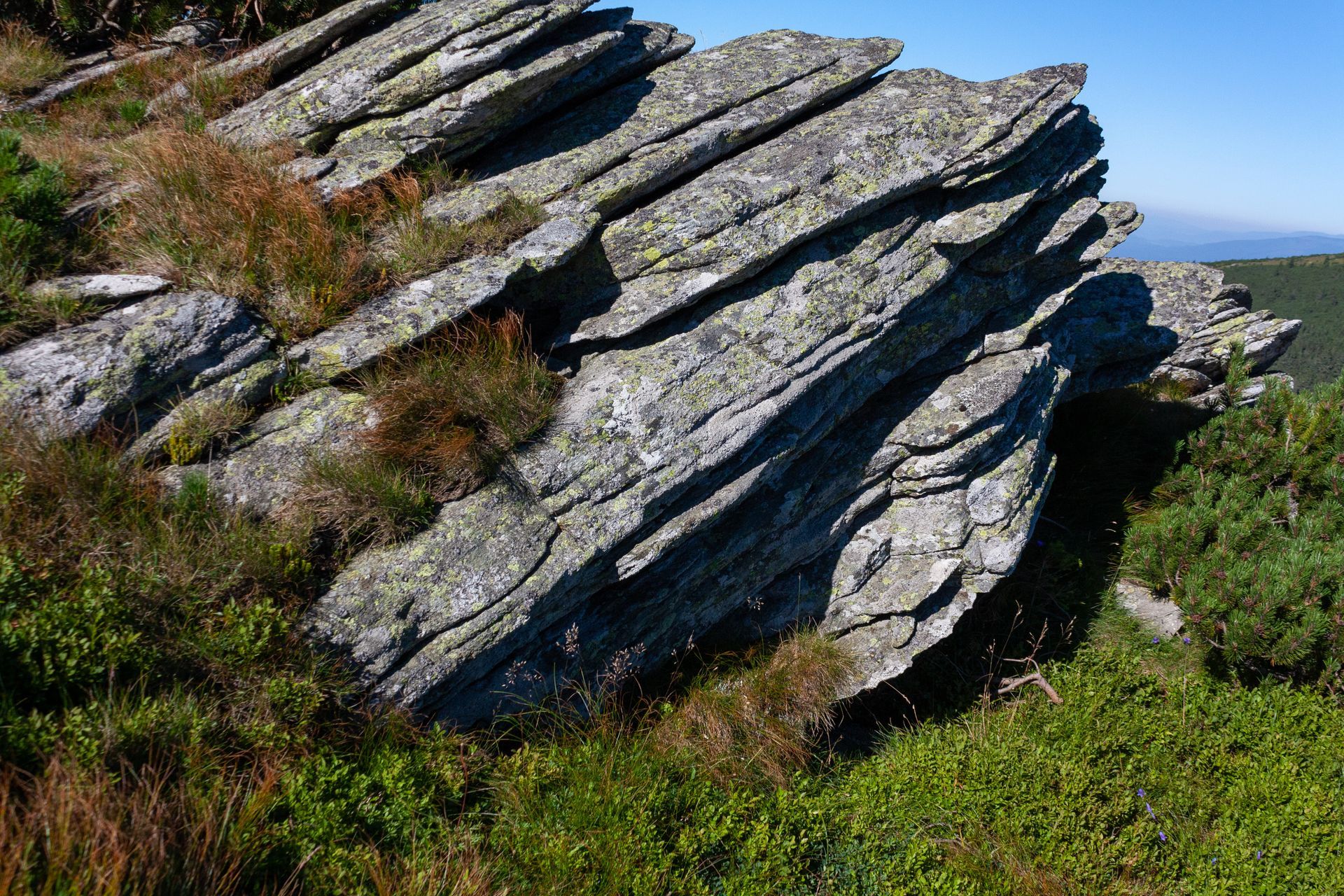
Slide title
Write your caption hereButton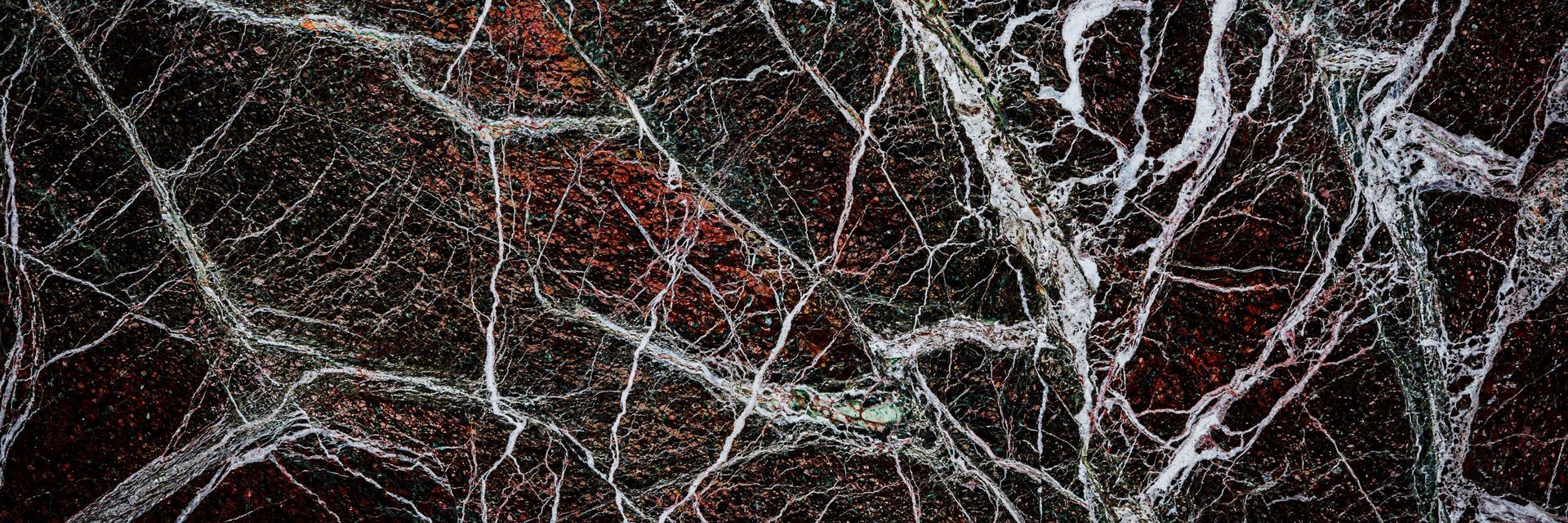
Slide title
Write your caption hereButton
Discover 6 Cool Types of Metamorphic Rocks and Their Uses!
1. Slate: Slate is a smooth rock that comes from a type called shale. It can be split into thin, flat pieces, which is why it's used for things like roof tiles, floor tiles, and even blackboards for writing with chalk.
2. Schist: Schist is a sparkly rock with layers of shiny minerals like mica. It's used as a pretty stone for decorating the outside of buildings, inside walls, and even kitchen counters.
3. Gneiss: Gneiss is a rock with bands of light and dark minerals, making it look striped. People like to use gneiss for things like floors, walls, and countertops because it's both strong and pretty.
4. Quartzite: Quartzite is a hard rock that comes from sandstone and has a glassy look. It's used for building walls, floors, and even as a pretty stone for countertops and gardens.
5. Amphibolite: Amphibolite is a dark rock that comes from another type called basalt. It's used for making roads and decorating the outside of buildings and gardens.
6. Phyllite: Phyllite is a shiny rock that's somewhere between slate and schist. It has a silky look because of tiny minerals called mica. People use phyllite to make pretty walls and floors, as well as to decorate gardens.
What is metamorphic rock?
Sedimentary rocks are made on the surface of the earth. But over time they get pushed down, down into the earth's crust.
Add a lot of heat and a lot of pressure, and these sedimentary rocks turn into metamorphic rocks. And we mean a lot of heat – at least as hot as an oven!
Some metamorphic rocks sparkle with crystals. Can you find any in the gift shop?

Slide title
Write your caption hereButton
Slide title
Write your caption hereButton
Discover 6 Cool Types of Metamorphic Rocks and Their Uses!
1. Slate: Slate is a smooth rock that comes from a type called shale. It can be split into thin, flat pieces, which is why it's used for things like roof tiles, floor tiles, and even blackboards for writing with chalk.
2. Schist: Schist is a sparkly rock with layers of shiny minerals like mica. It's used as a pretty stone for decorating the outside of buildings, inside walls, and even kitchen counters.
3. Gneiss: Gneiss is a rock with bands of light and dark minerals, making it look striped. People like to use gneiss for things like floors, walls, and countertops because it's both strong and pretty.
4. Quartzite: Quartzite is a hard rock that comes from sandstone and has a glassy look. It's used for building walls, floors, and even as a pretty stone for countertops and gardens.
5. Amphibolite: Amphibolite is a dark rock that comes from another type called basalt. It's used for making roads and decorating the outside of buildings and gardens.
6. Phyllite: Phyllite is a shiny rock that's somewhere between slate and schist. It has a silky look because of tiny minerals called mica. People use phyllite to make pretty walls and floors, as well as to decorate gardens.
What is metamorphic rock?
Sedimentary rocks are made on the surface of the earth. But over time they get pushed down, down into the earth's crust.
Add a lot of heat and a lot of pressure, and these sedimentary rocks turn into metamorphic rocks. And we mean a lot of heat – at least as hot as an oven!
Some metamorphic rocks sparkle with crystals. Can you find any in the gift shop?

Slide title
Write your caption hereButton
Slide title
Write your caption hereButton
Discover 6 Cool Types of Metamorphic Rocks and Their Uses!
1. Slate: Slate is a smooth rock that comes from a type called shale. It can be split into thin, flat pieces, which is why it's used for things like roof tiles, floor tiles, and even blackboards for writing with chalk.
2. Schist: Schist is a sparkly rock with layers of shiny minerals like mica. It's used as a pretty stone for decorating the outside of buildings, inside walls, and even kitchen counters.
3. Gneiss: Gneiss is a rock with bands of light and dark minerals, making it look striped. People like to use gneiss for things like floors, walls, and countertops because it's both strong and pretty.
4. Quartzite: Quartzite is a hard rock that comes from sandstone and has a glassy look. It's used for building walls, floors, and even as a pretty stone for countertops and gardens.
5. Amphibolite: Amphibolite is a dark rock that comes from another type called basalt. It's used for making roads and decorating the outside of buildings and gardens.
6. Phyllite: Phyllite is a shiny rock that's somewhere between slate and schist. It has a silky look because of tiny minerals called mica. People use phyllite to make pretty walls and floors, as well as to decorate gardens.
What is igneous rock?
Igneous rocks are formed from molten rock or magma. This bursts from volcanoes at incredible temperatures – or it oozes underground.
When the magma cools down, it dries. A bit like glue, it's sticky at first, then goes hard. The hard magma is called igneous rock.
Volcanoes can be scary – but without them, we wouldn't have rocks like granite and basalt.
What is igneous rock?
Igneous rocks are formed from molten rock or magma. This bursts from volcanoes at incredible temperatures – or it oozes underground.
When the magma cools down, it dries. A bit like glue, it's sticky at first, then goes hard. The hard magma is called igneous rock.
Volcanoes can be scary – but without them, we wouldn't have rocks like granite and basalt.
What are Stump Cross Caverns made from?
Stump Cross Caverns are made from limestone. This is a sedimentary rock.
What are Stump Cross Caverns made from?
Stump Cross Caverns are made from limestone. This is a sedimentary rock.
What are Stump Cross Caverns made from?
Stump Cross Caverns are made from limestone. This is a sedimentary rock.





